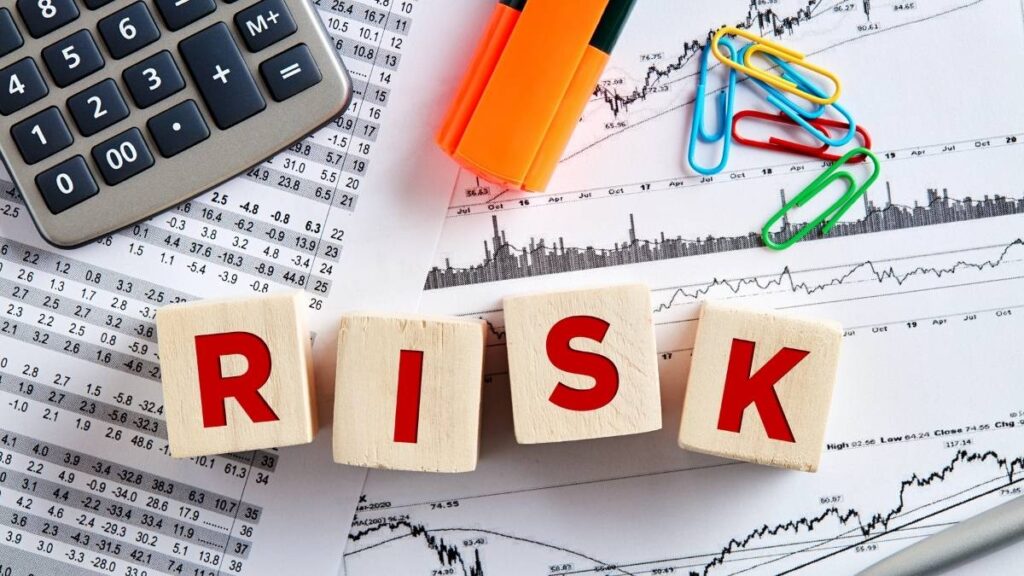
For every story of a millionaire made by a brilliant investment, there is an untold story of a fortune diminished by a single, predictable mistake. The greatest threat to wealth is not the market crash one sees coming; it is the behavioral blind spot one does not.
A survey by Wells Fargo revealed that the single biggest regret for affluent investors with six-figure portfolios was not having done a better job making investment decisions. They, like many others, recognize that the difference between sustained wealth and a story of “what might have been” lies not in genius, but in discipline.
This report deconstructs the 14 most common and costly investing mistakes, leveraging decades of behavioral finance research, hard data, and the candid regrets of market legends. The objective is to provide a data-backed playbook for navigating the markets in 2025 and beyond.
The Foundational Mistakes – Errors in Mindset and Strategy
The most catastrophic investment errors are not born from poor stock picks but from a flawed strategic foundation. The following mistakes in mindset create the conditions for tactical failure, making subsequent losses almost inevitable.
Mistake 1: Succumbing to Overconfidence and The Ego Trap

The first and most pervasive mistake is the tendency for individuals who are highly successful in one domain—such as business, law, or medicine—to believe they possess a “golden touch” that extends to financial markets.
This is not merely healthy confidence; it is a well-documented cognitive bias that systematically distorts judgment, causing investors to overestimate their knowledge and dangerously underestimate risk.
This overconfidence bias often stems from a misattribution of past success. A successful entrepreneur, for example, might attribute their achievements solely to personal skill, while discounting the significant roles that luck, timing, and market conditions played.
The consequences are severe and quantifiable. Overconfident investors trade more frequently, believing they have an edge.
However, a classic study analyzing trades at a large brokerage firm found that the most active retail investors consistently underperform the market, with their purchased stocks lagging the stocks they sold by over 5% in the first year.
The 2025 Action Plan
Acknowledge Your Circle of Competence: Be brutally honest about the limits of one’s expertise. Success as a surgeon does not confer an innate ability to value a biotech stock.
Create an Investment Policy Statement (IPS): This is a formal written document that outlines financial goals, risk tolerance, asset allocation strategy, and criteria for making changes. It serves as a rational anchor during emotional or volatile periods, forcing adherence to pre-agreed rules rather than gut feelings.
Engage a “Devil’s Advocate”: Work with an objective, independent financial advisor whose role is not to simply execute orders but to challenge assumptions. This professional should stress-test ideas with data, scenario analysis, and backtesting to provide an unbiased perspective.
Mistake 2: The Futile Attempt to Time the Market

The belief that one can consistently predict market peaks and troughs—selling before downturns and buying back in just before recoveries—is one of the most seductive and destructive myths in investing.
This strategy requires being right not once, but twice: on the exit and on the re-entry. It is a feat that even the most seasoned professionals rarely, if ever, achieve with any consistency.
Millionaires frequently cite this as a major regret because attempts to sidestep volatility often result in missing the market’s most powerful and unpredictable recovery days.
This behavior is driven by a potent combination of fear (the desire to avoid losses) and greed (the desire to maximize gains), both of which are amplified by recency bias—the tendency to give too much weight to recent market performance and extrapolate it into the future.
The act of market timing fundamentally misunderstands and mismanages risk. In an attempt to eliminate one type of risk (a temporary market decline), investors expose themselves to a much larger and more probable risk.
The 2025 Action Plan
Shift Focus from “Timing the Market” to “Timing Your Life”: Align the investment strategy with concrete life goals and their associated time horizons, such as retirement in 20 years or a child’s college education in 10. This reframes investing as a purpose-driven activity, insulating it from the panic induced by daily market fluctuations.
Automate Discipline: Implement a systematic investment plan, such as dollar-cost averaging, which involves investing a fixed amount at regular intervals regardless of market conditions. This removes emotion from the decision-making process and naturally leads to buying more shares when prices are low and fewer when they are high.
Control the Controllables: An investor cannot control market movements, interest rates, or inflation. They can, however, control their savings rate, their investment time horizon, and their own behavior. Focusing energy on these controllable factors is the key to long-term success.
Mistake 3: Misunderstanding Diversification and Concentrating Risk

Many HNWIs, particularly successful entrepreneurs and executives, fall into the trap of concentrating a vast portion of their net worth in a single asset—most often, their own business or company stock.
They mistake familiarity for safety, failing to appreciate that the very concentration that created their wealth now poses the single greatest threat to its preservation.
The psychological drivers behind this error are powerful. Affinity bias, the tendency to invest in what we know and like, and endowment bias, which causes us to overvalue what we already own, create a strong emotional attachment to a concentrated position.
A company founder, for instance, feels a deep connection to their stock. They believe they understand its prospects better than anyone, which leads them to perpetually delay diversification, waiting for a “perfect” price that may never come.
Beyond single-stock risk, business owners who fail to systematically diversify their personal wealth outside of their primary enterprise risk losing everything if their industry faces a secular decline. Similarly, real estate investors with highly illiquid portfolios can face severe cash flow crises during economic slumps.
The 2025 Action Plan
Conduct a Correlation Audit: True diversification is not about owning many things, but about owning things that behave differently under various market conditions. Work with an advisor to analyze the portfolio’s correlations.
Implement a Systematic Divestment Plan: For a concentrated position (e.g., more than 10% of total net worth in a single stock), create a written, multi-year plan to methodically trim the position. This should be done in a tax-efficient manner, without trying to time the sales perfectly.
Diversify Human Capital: Recognize that one’s primary income source is also a major asset. An executive whose career and compensation are tied to the technology sector should have a personal investment portfolio that is deliberately less concentrated in tech stocks to diversify away from this career-related risk.
The Execution Mistakes – Errors in Action
Even with a sound strategy, wealth can be eroded through poor execution. The following mistakes occur in the day-to-day management of a portfolio and are almost always driven by predictable emotional and psychological biases.
Mistake 4: Making Emotional Decisions (The Fear and Greed Cycle)

This is the central tenet of behavioral finance: the tendency to abandon a logical, long-term plan in favor of impulsive actions driven by prevailing market sentiment. It manifests as buying high during periods of euphoria, driven by a fear of missing out (FOMO), and selling low during periods of panic, driven by the fear of further losses.
The primary psychological driver is loss aversion. Decades of research have shown that the psychological pain of a loss is felt approximately twice as intensely as the pleasure of an equivalent gain.
This asymmetry makes investors irrationally risk-averse after a market downturn, compelling them to sell at or near the bottom—the point of maximum pessimism—thereby locking in temporary paper losses and turning them into permanent ones.
The financial cost of this behavior is not theoretical; it is precisely measured by the annual Quantitative Analysis of Investor Behavior (QAIB) report from DALBAR.
For over 30 years, this study has documented a persistent and significant “behavior gap” between the returns of investment benchmarks and the actual returns achieved by the average investor. This gap represents the quantifiable price of emotional decision-making.
Stop Robbing Your Future Self!
The Shocking 2024 Data
Investors made poor timing decisions, selling just before market surges. This created a massive performance gap.
The Long-Term Cost of Bad Timing
Over 20 years, a “small” 1% annual behavior gap on a $1M investment can cost you over $1,000,000!
How to Beat the Gap!
Use these rules to protect your money from emotional decisions.
- 1. Trust Your Plan Consult your Investment Policy Statement (IPS). It was written by your rational self!
- 2. The 48-Hour Rule No big decisions for 48 hours after major news. Let your brain cool off!
- 3. Call Your “Coach” Use your financial advisor as a behavioral coach. Call them *before* you hit the sell button.
The 2025 Action Plan
Consult the Investment Policy Statement (IPS): During periods of high volatility, the IPS is an investor’s constitution. It was written by their rational self; it is crucial to trust that document over the impulses of their emotional self.
Implement a “Decision Delay” Rule: Institute a personal, unbreakable rule: no major buy or sell decisions can be made for at least 48 hours following a significant market move or major news event. This “cooling-off” period serves as a circuit breaker, disrupting the emotional feedback loop and allowing for more rational analysis.
Utilize a Behavioral Coach: A key, and often undervalued, role of a high-quality financial advisor is to act as a behavioral coach. This is the person to call before hitting the sell button, who can provide objective perspective, historical context, and a reminder of the long-term plan.
Mistake 5: Chasing Hype, Fads, and “Watercooler” Tips

This mistake involves abandoning a disciplined, research-based strategy to invest in the “hot” stock, sector, or asset class of the moment. It is driven by media hype, social media buzz, or anecdotal tips from friends and colleagues, and is a pure manifestation of FOMO.
The psychological force at play is herd mentality. As social creatures, humans are wired to follow the crowd. When we see others apparently making easy money on something—be it meme stocks, a niche cryptocurrency, or a trendy tech theme—it triggers a powerful and often irresistible urge to join in.
This impulse can override an investor’s own due diligence and long-term strategy. One Reddit user perfectly captured the folly of this approach with the warning about listening to “watercooler stock tips,” noting that “Tom in Marketing does not know the next Junior Gold miner that’ll spike”.
The 2025 Action Plan
Filter Noise from Information: Develop a strict process for evaluating investment ideas. A company’s quarterly earnings report, its balance sheet, and its strategic plan are information. A sensational media headline about a “stock that could triple” or an anonymous social media post is noise. Base decisions on fundamentals, not narratives.
Establish a “Speculative” Budget: For those who feel a strong urge to participate in higher-risk trends, the most effective way to manage it is to contain it. Allocate a very small, fixed percentage of the overall portfolio (e.g., 1% to 5%) to a separate “speculative” account. Any investments in this account are understood to be high-risk, and if the money is lost, it will not derail the core financial plan.
Invest, Don’t Collect: Be wary of pouring significant capital into illiquid “investments” like collectibles (e.g., rare sneakers, art, baseball cards). These assets are highly subject to fads, have no intrinsic cash flow, and often cannot be sold quickly without taking a substantial loss, or “haircut”. Focus the core portfolio on productive assets that generate earnings or income.
Mistake 6: Selling Winners Too Soon and Holding Losers Too Long

This is a classic two-part behavioral error known as the disposition effect. Investors demonstrate a strong and irrational tendency to sell assets that have appreciated in value to “lock in a gain,” while simultaneously holding on to assets that have declined in value, hoping they will “get back to even.”
The psychological drivers are regret aversion and loss aversion. Selling a losing investment forces an investor to admit a mistake and makes the loss “real,” a psychologically painful experience that many will go to great lengths to avoid.
By holding on, they can live with the hope of a rebound, even if fundamentals have deteriorated. Conversely, selling a winning investment provides a quick and satisfying hit of pleasure and validation, while also eliminating the fear that the hard-won gains might evaporate in a market downturn.
The cost of this mistake is the enormous opportunity cost of unrealized gains. The greatest wealth-building stocks often compound their value over many years, and selling out after an initial run-up can mean forgoing the lion’s share of the returns.
Famous Regret 1: Financial personality Suze Orman bought shares in Amazon in 1997. She sold them a few years later for what she called a “tidy profit.” She now says she gets “sick to her stomach” thinking about the life-changing, generational wealth she left on the table by not holding on for the long term.
Famous Regret 2: Investor Diego Apaza shared his regret of selling Tesla stock after it had quadrupled from his purchase price, only to watch it soar another 1,500%. He locked in a good gain but missed out on a phenomenal, portfolio-defining one.
The Data: Academic research confirms this is a widespread phenomenon. Studies show that traders are 1.5 to 2 times more likely to sell a winning position too early and a losing position too late, all to avoid the feeling of regret.
The 2025 Action Plan
Adopt a Gardener’s Mindset: Systematically review the portfolio with the mantra: “Water the flowers, pull the weeds.” This means giving the winning investments—those with strong, enduring fundamentals—the time and capital to continue growing.
Use the “Zero-Base” Test: For every asset held in the portfolio, especially the losers, ask the critical question: “Knowing what I know today, if this position were cash, would I buy this stock?” If the honest answer is “no,” it is a strong signal that the position should be sold and the capital redeployed to a more promising opportunity.
Implement Rule-Based Selling: To take emotion out of the decision, set clear rules. For winning positions, instead of selling outright, consider using a trailing stop-loss order (e.g., sell if the price drops 15% from its peak).
This protects a majority of the gains while still allowing for further upside. For losing positions, establish a hard stop-loss based on a percentage decline from the purchase price (e.g., 20%) to prevent a small mistake from turning into a catastrophic loss.
Mistake 7: Neglecting Estate Planning

For HNWIs, building wealth is only half the battle; ensuring its efficient and intentional transfer to the next generation is the other.
A startling number of affluent individuals make the mistake of having poor, outdated, or nonexistent estate plans, viewing it as a task for the distant future. This procrastination can have devastating financial and familial consequences.
The consequences of this neglect are multifaceted and severe:
Excessive Taxation: Without proper planning, significant portions of an estate can be lost to inheritance taxes (IHT). It is not uncommon for estates to face six or even seven-figure IHT bills that could have been substantially reduced or eliminated with foresight and the use of legal structures like trusts.
Family Conflict: A lack of clear instructions is a primary driver of legal battles among heirs. In the UK, around 10,000 wills were contested in 2024, with 50% of these cases stemming from disputes between siblings. Such conflicts not only deplete the estate through legal fees but can permanently damage family relationships.
Misallocation of Assets: Without a clear plan, wealth can be distributed incorrectly, with assets unintentionally passing to estranged family members or inexperienced heirs receiving large sums before they are financially mature enough to handle them.
The 2025 Action Plan
Create a Comprehensive Estate Plan: This is non-negotiable and should include, at a minimum, a will, powers of attorney for finances and healthcare, and potentially trusts to manage assets and minimize tax liabilities.
Plan for Intergenerational Transfer: Work with legal and tax experts to structure the transfer of wealth in the most efficient way possible. This includes communicating with heirs about their future roles and responsibilities to prepare them for stewardship.
Regularly Review and Update: An estate plan is not a “set it and forget it” document. It must be reviewed every few years, or after any major life event (marriage, divorce, birth of a child, significant change in wealth), to ensure it still reflects current wishes and laws.
Mistake 8: Ignoring Tax Efficiency

Even sophisticated investors often overlook the profound impact of taxes on their long-term returns. A failure to structure a portfolio in a tax-efficient manner can lead to a significant drag on performance, effectively shrinking real returns year after year.
Many investors regret not paying closer attention to tax planning, as the compounded savings over decades can be enormous.
Investors approaching retirement often wish they had more after-tax money available (from Roth accounts) rather than the modest tax break they received years ago from traditional pre-tax contributions. This highlights a common failure to think through the long-term tax implications of investment decisions.
The 2025 Action Plan
Utilize Tax-Advantaged Accounts: Maximize contributions to all available tax-advantaged accounts, such as 401(k)s, and Roth IRAs if income limits permit.
Practice Asset Location: This is a strategy that involves placing tax-inefficient assets (like corporate bonds or actively traded funds that generate high turnover) inside tax-advantaged accounts, while placing tax-efficient assets (like index funds or individual stocks held for the long term) in taxable brokerage accounts.
Leverage Tax-Loss Harvesting: Systematically sell investments at a loss to offset capital gains from winning investments, which can significantly lower the overall tax bill. This is a disciplined way to turn market downturns into a tax-saving opportunity.
Mistake 9: Succumbing to Lifestyle Inflation

As wealth grows, there is a natural temptation to upgrade one’s lifestyle. However, when spending rises in lockstep with (or even faster than) investment returns, it leads to the erosion of wealth. This “lifestyle inflation” can create a situation where, despite a large asset base, an individual is on a path to outlive their money.
The consequences include becoming accustomed to a high spending rate that is difficult to scale back during market downturns, and passing on unsustainable financial habits to the next generation. The solution is to align lifestyle choices with the sustainable withdrawal rate of the portfolio, rather than assuming a bottomless well of assets.
The 2025 Action Plan
Establish a Sustainable Drawdown Strategy: Work with a financial planner to determine a safe and sustainable percentage of the portfolio that can be withdrawn each year to fund lifestyle expenses without depleting the principal.
Budget Based on the Plan, Not the Portfolio Value: Create a budget based on the sustainable withdrawal amount, not the fluctuating total value of the portfolio. This decouples spending decisions from short-term market volatility.
Prioritize Experiences Over Possessions: Research suggests that spending money on experiences, such as travel, provides more long-lasting happiness than spending on material goods. Interestingly, taking more vacation time has also been correlated with higher rates of promotion and income.
Mistake 10: Insisting on DIY Investing Without Professional Guidance

Driven by the same overconfidence discussed in Mistake #1, many HNWIs believe they can manage their complex financial lives entirely on their own. While self-directed investing is more accessible than ever, going it alone means missing out on the objective advice, strategic planning, and behavioral coaching that a qualified professional can provide.
The value of an advisor is not just in picking investments, but in providing a crucial, unbiased second opinion to counteract behavioral biases. They can help with complex issues like tax planning, estate law, and risk management that go far beyond simple stock selection.
According to a J.P. Morgan study, lack of confidence is a major reason investors seek professional help, with 71% of women who work with an advisor citing this reason.
The 2025 Action Plan
Seek Objective Advice: Engage a fee-only, fiduciary financial advisor who is legally obligated to act in the client’s best interest.
Focus on Comprehensive Planning: The best advisory relationships go beyond investments to encompass all aspects of financial life, including taxes, insurance, estate planning, and charitable giving.
Use Technology and Advisors in Tandem: The rise of sophisticated wealth management technology allows investors to be more hands-on while still benefiting from professional oversight. Many younger investors prefer this hybrid approach.
Mistake 11: Not Starting to Invest Early Enough

Among all financial regrets, this is perhaps the most common and poignant. Many affluent individuals look back and realize that if they had started investing earlier and been more frugal in their youth, their nest egg would be substantially larger.
The cost of a delayed start is staggering. Investing $500 per month at a 5% annual return over a 40-year period results in a portfolio worth over $725,000. Waiting 20 years to start means the same investment would grow to less than $200,000.
This illustrates that the amount of time money is invested is often more important than the rate of return. A common misconception among young people is that they need a lot of money to start, but most brokerages now have no minimums and allow for the purchase of fractional shares.
The 2025 Action Plan
Start Now, Regardless of the Amount: The most important step is the first one. Open an investment account and begin contributing regularly, even if the amount is small.
Automate Savings: Set up automatic transfers from a checking account to an investment account to make saving and investing a consistent, effortless habit.
Educate the Next Generation: For those who regret their own late start, the most powerful action is to educate their children and grandchildren about the importance of early investing, perhaps by helping them open and fund a Roth IRA as soon as they have earned income.
Mistake 12: Using Debt Recklessly

While debt can be a powerful tool for building wealth when used prudently (e.g., a mortgage for a home or financing for a business), it can be a destructive force when used recklessly. Financial expert Dave Ramsey‘s personal story is a stark cautionary tale.
In his early 20s, he built a multi-million dollar real estate portfolio by relying heavily on financing. When his largest lender was acquired, the new bank called his loans, demanding payment within 90 days. Unable to pay, he was forced into bankruptcy at age 28, an experience that left him “broke and broken”.
His regret was not in investing, but in building his empire on a foundation of debt without an adequate safety net. This experience transformed his financial philosophy into one that prioritizes avoiding debt and building a strong emergency fund before engaging in more aggressive investing.
The 2025 Action Plan
Distinguish Between “Good” and “Bad” Debt: Good debt is typically low-interest, tax-deductible, and used to acquire an appreciating asset. Bad debt is high-interest and used for depreciating assets or consumption.
Build a Safety Net First: Before taking on significant investment risk, ensure a robust emergency fund (3-6 months of living expenses) is in place to avoid being forced to sell investments at an inopportune time to cover unexpected costs.
Avoid Leverage in Volatile Assets: Using borrowed money (leverage) to invest in highly volatile assets like individual stocks or cryptocurrency dramatically magnifies both potential gains and potential losses, and is a recipe for financial ruin for most investors.
Mistake 13: Failing to Reassess and Rebalance

An investment portfolio is not a static entity. As life circumstances evolve—through marriage, the birth of children, career changes, or approaching retirement—financial goals and risk tolerance also change.
A common mistake is failing to regularly review and adjust the portfolio to reflect these new realities. A portfolio designed for aggressive growth in one’s 30s is likely inappropriate for someone approaching retirement in their 60s.
Furthermore, markets themselves cause portfolios to drift from their target allocations. If stocks have a strong run, they will come to represent a larger percentage of the portfolio, increasing its overall risk profile.
Rebalancing is the disciplined process of periodically selling some of the outperforming assets and buying more of the underperforming ones to return to the original target allocation. This forces an investor to systematically “sell high and buy low.”
The 2025 Action Plan
Schedule Annual Portfolio Reviews: At least once a year, or after any major life event, conduct a thorough review of the investment portfolio with a financial advisor.
Reassess Risk Tolerance: Life events can change how much risk an investor is willing or able to take. A professional risk profiling assessment can provide an objective measure.
Rebalance Systematically: Establish a clear rule for rebalancing, for example, whenever an asset class deviates from its target allocation by more than 5%. This makes the process mechanical and removes emotion.
Mistake 14: Letting Spite or Ego Drive Decisions

Perhaps the most human of all investing mistakes is allowing emotions like anger, spite, or ego to dictate financial strategy. The most famous example of this comes from the master of rational investing himself, Warren Buffett. His biggest regret was his initial purchase of Berkshire Hathaway, then a failing textile company.
After investing, the manager offered to buy back Buffett’s shares at a price lower than they had verbally agreed upon. Enraged by the slight, Buffett, fueled by spite, did the opposite of selling—he aggressively bought more shares until he had control of the company, then promptly fired the manager.
He was left as the majority owner of a dying business in a terrible industry. He estimates this single, emotionally-driven decision cost him $200 billion in opportunity cost over the subsequent 45 years—money that could have been invested in wonderful businesses from the start instead of being used to prop up a failing one.
The lesson is profound: no one is immune to emotional decision-making, and the cost of letting feelings override facts can be astronomical.
The 2025 Action Plan
Never Invest with Emotion: Recognize anger, excitement, or spite as red flags. These emotions should trigger the “Decision Delay” rule (Mistake #4), not an immediate transaction.
Focus on Facts, Not Feelings: Every investment decision should be based on a rational analysis of the business’s fundamentals and its valuation, not on personal feelings about a CEO, a competitor, or a past grievance.
Learn from the Masters’ Mistakes: The fact that even Warren Buffett made such a colossal error should serve as a humbling reminder to all investors. The key to his success was not that he was flawless, but that he learned from his mistakes and built a system of rational decision-making to prevent repeating them.
Conclusion
The journey through these 14 regrets reveals a profound and consistent truth: successful long-term investing has less to do with predicting the future and more to do with managing one’s own behavior in the present.
The market’s greatest risks are not external events like recessions or geopolitical shocks, but the internal, unexamined biases that lead to predictable and costly investing mistakes. The persistent gap between market returns and investor returns, as documented by DALBAR for decades, is the ultimate proof that behavior is the primary determinant of outcomes.
The stories of Buffett’s emotional purchase, Orman’s premature sale, and the millions of investors who underperform the market each year are not indictments; they are guideposts.
They illuminate the exact psychological and strategic pitfalls to avoid. Wealth is built through enterprise, skill, and hard work, but it is preserved and grown through discipline, humility, and an unwavering commitment to a rational, written plan.
In 2025, the challenge is to resolve to stop fighting the market and start mastering oneself. A “regret audit” using this guide can help identify personal vulnerabilities. The most powerful and profitable investment one can make is in a strategy that protects a portfolio from its single biggest threat: its owner.






